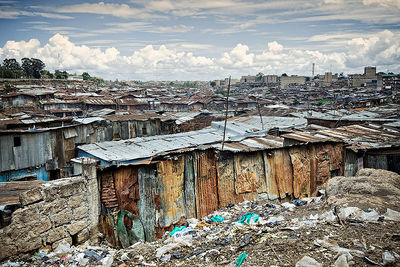imported>Chunbum Park |
imported>John Stephenson |
| (143 intermediate revisions by 5 users not shown) |
| Line 1: |
Line 1: |
| == '''[[Hausdorff dimension]]''' ==
| | {{:{{FeaturedArticleTitle}}}} |
| ''by [[User:Melchior Grutzmann|Melchior Grutzmann]] (and [[User:Brandon Piercy|Brandon Piercy]] and [[User:Hendra I. Nurdin|Hendra I. Nurdin]])
| | <small> |
| | | ==Footnotes== |
| ----
| |
| | |
| In [[mathematics]], the '''Hausdorff dimension''' is a way of defining a possibly fractional exponent for all figures in a [[metric space]] such that the dimension describes partially the amount to that the set fills the space around it. For example, a [[plane (geometry)|plane]] would have a Hausdorff dimension of 2, because it fills a 2-parameter subset. However, it would not make sense to give the [[Sierpiński triangle]] [[fractal]] a dimension of 2, since it does not fully occupy the 2-dimensional realm. The Hausdorff dimension describes this mathematically by measuring the size of the set. For self-similar sets there is a relationship to the number of self-similar subsets and their scale.
| |
| | |
| === Informal definition ===
| |
| Intuitively, the dimension of a set is the number of independent parameters one has to pick in order to fix a point. This is made rigorously with the notion of ''d''-dimensional (topological) [[manifold]] which are particularly regular sets. The problem with the classical notion is that you can easily break up the digits of a real number to map it bijectively to two (or ''d'') real numbers. The example of space filling curves shows that it is even possible to do this in a continuous (but non-bijective) way.
| |
| | |
| The notion of Hausdorff dimension refines this notion of dimension such that the dimension can be any non-negative number.
| |
| | |
| Benoît Mandelbrot discovered<ref>B.B. Mandelbrot: ''The fractal geometry of nature'', Freemann '''(1983)''', ISBN 978-0-716-711-865</ref> that many objects in nature are not strictly classical smooth bodies, but best approximated as fractal sets, i.e. subsets of '''R'''<sup>''N''</sup> whose Hausdorff dimension is strictly greater than its topological dimension.
| |
| | |
| | |
| === Hausdorff measure and dimension ===
| |
| Let ''d'' be a non-negative real number and ''S'' ⊂ ''X'' a subset of a metric space (''X'',''ρ''). The ''d''-dimesional Hausdorff measure of scale ''δ''>0 is
| |
| :<math> H^{d*}_\delta(S) := \inf \{\sum_{i=1}^\infty r_i^d : S\subset\bigcup_{i=1}^\infty B_{r_i}(x_i), r_i\le\delta \}</math>
| |
| where B<sub>''r''<sub>''i''</sub>(''x''<sub>''i''</sub>) is the open ball around ''x''<sub>''i''</sub> ∈ ''X'' of radius ''r''<sub>''i''</sub>. The ''d''-dimensional Hausdorff measure is now the limit
| |
| :<math> H^{d*}(S) := \lim_{\delta\to0+} H^{d*}_\delta(S)</math>.
| |
| As in the Carathéodory construction a set ''S'' ⊂ ''X'' is called ''d''-measurable iff
| |
| :<math> H^{d*}(T) = H^{d*}(S\cap T)+ H^{d*}(T\cap X\setminus S)</math> for all ''T'' ⊂ ''X''.
| |
| A set ''S'' ⊂ ''X'' is called Hausdorff measurable if it is H<sup>''d''</sup>-measurable for all ''d''≥0.
| |
| | |
| ''[[Hausdorff dimension|.... (read more)]]''
| |
| | |
| {| class="wikitable collapsible collapsed" style="width: 90%; float: center; margin: 0.5em 1em 0.8em 0px;"
| |
| |-
| |
| ! style="text-align: center;" | [[Ideal gas law#References|notes]]
| |
| |-
| |
| |
| |
| {{reflist|2}} | | {{reflist|2}} |
| |}
| | </small> |
Latest revision as of 09:19, 11 September 2020

The Mathare Valley slum near Nairobi, Kenya, in 2009.
Poverty is deprivation based on lack of material resources. The concept is value-based and political. Hence its definition, causes and remedies (and the possibility of remedies) are highly contentious.[1] The word poverty may also be used figuratively to indicate a lack, instead of material goods or money, of any kind of quality, as in a poverty of imagination.
Definitions
Primary and secondary poverty
The use of the terms primary and secondary poverty dates back to Seebohm Rowntree, who conducted the second British survey to calculate the extent of poverty. This was carried out in York and was published in 1899. He defined primary poverty as having insufficient income to “obtain the minimum necessaries for the maintenance of merely physical efficiency”. In secondary poverty, the income “would be sufficient for the maintenance of merely physical efficiency were it not that some portion of it is absorbed by some other expenditure.” Even with these rigorous criteria he found that 9.9% of the population was in primary poverty and a further 17.9% in secondary.[2]
Absolute and comparative poverty
More recent definitions tend to use the terms absolute and comparative poverty. Absolute is in line with Rowntree's primary poverty, but comparative poverty is usually expressed in terms of ability to play a part in the society in which a person lives. Comparative poverty will thus vary from one country to another.[3] The difficulty of definition is illustrated by the fact that a recession can actually reduce "poverty".
Causes of poverty
The causes of poverty most often considered are:
- Character defects
- An established “culture of poverty”, with low expectations handed down from one generation to another
- Unemployment
- Irregular employment, and/or low pay
- Position in the life cycle (see below) and household size
- Disability
- Structural inequality, both within countries and between countries. (R H Tawney: “What thoughtful rich people call the problem of poverty, thoughtful poor people call with equal justice a problem of riches”)[4]
As noted above, most of these, or the extent to which they can be, or should be changed, are matters of heated controversy.
- ↑ Alcock, P. Understanding poverty. Macmillan. 1997. ch 1.
- ↑ Harris, B. The origins of the British welfare state. Palgrave Macmillan. 2004. Also, Oxford Dictionary of National Biography.
- ↑ Alcock, Pt II
- ↑ Alcock, Preface to 1st edition and pt III.
